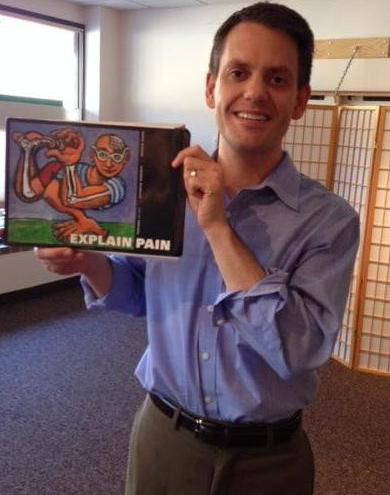Recently NPR featured a program on Back Pain Boot Camp and we began to receive phone calls asking if we had such a program. The nature of the “Back Pain Boot Camp” message is one we rely on every day in treating patients with prolonged painful conditions. It is to help people understand their pain, stop altering their proper movement patterns out of fear of pain, and begin to recondition their bodies using healthy and efficient movement patterns – without pain as their only guide for activity. Patients are taught to reclaim their physical activities using a reasonable, time based, graded progression of activity rather than relying on faulty, overactive pain signals to limit their activity. Scientists have shown these hyperactive pain messages develop in prolonged painful conditions and make us fearful of safe, healthy activity. Fear of activity quickly turns into a dangerous, downhill slide where pain dominates and everything else takes a back seat.
There is a book we use in our clinic called “Explain Pain” by David Butler. Information about chronic pain is presented in an informal way, with lots of images and clear explanations. It feels as if the author and the reader are sitting down over coffee. The chapters are short and to the point. The book helps promote the understanding that there can be safe movements that may “hurt” but won’t cause harm. My favorite section on “Management Essentials” specifically educates the reader about pacing daily activities to become aware of how much activity exposure to safely begin with. This awareness and graded exposure can be the first step toward living without pain dominating our life. Pacing oneself to not “over-due” the exposure takes guidance, especially at first. We provide this guidance for our patients during their visits and they are encouraged to use these techniques toward reclaiming activity in their daily life.

During our one on one physical therapy sessions, we help patients learn about why they are experiencing pain and how to establish new confidence in using their body without harm. This re-learning involves the entire body, from the brain down the nerves that help make the body move. Happy reading!
* Explain Pain is written by David S. Butler and G. Lorimer Moseley, copyright 2003, 2008 Noigroup Publications. In writing this blog, Advance Physical Therapy is not receiving any compensation or incentive besides wanting to help others!



